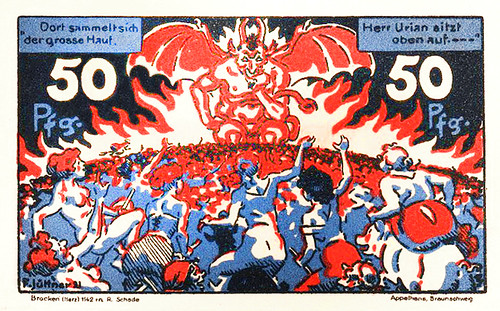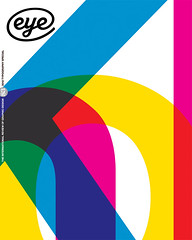Tuesday, 5:32am
31 July 2012
The notes may be fabricated
Alternative currencies show that money is just an idea that can be redesigned. By Livia Lima
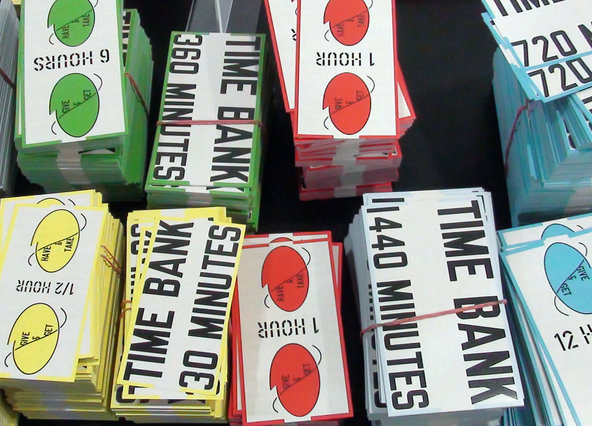
We live in an age when it is difficult to trust our banks, writes Livia Lima, but what about the notes in your purse or wallet? With economies across Europe teetering on the edge of collapse, plans are being drawn up to revive ‘retired’ currencies such as the drachma, and some Greek cities have jumped the gun by issuing their own alternative currencies.
Activists in the town of Volos have introduced the TEM, a currency based on trading skills and products. Yoga classes, language lessons, and sales of craft goods can now be banked as TEMs. Credit in the TEM bank seems more secure than the promises of the government in Athens.
There is nothing new about what is happening in Volos. Alternative currencies have been around for millennia. They commonly emerge during periods of social turmoil, when trust and value in legal tender is stretched to the limit. Difficult conditions can stimulate creative economic thinking and new designs.
 Perhaps the best known example of a successful alternative currency was created in the Austrian town of Wörgl (above). During the Great Depression in the 1930s, Wörgl was bankrupt with unemployment at 75 per cent. The town’s mayor believed that the slow circulation of money was the cause of the crisis, and started issuing the town’s own currency. He penalised hoarding by stamping a usage fee of one percent per month on the ‘Wörgl schillings’. The mayor not only changed the money: he changed the way people thought about it.
Perhaps the best known example of a successful alternative currency was created in the Austrian town of Wörgl (above). During the Great Depression in the 1930s, Wörgl was bankrupt with unemployment at 75 per cent. The town’s mayor believed that the slow circulation of money was the cause of the crisis, and started issuing the town’s own currency. He penalised hoarding by stamping a usage fee of one percent per month on the ‘Wörgl schillings’. The mayor not only changed the money: he changed the way people thought about it.
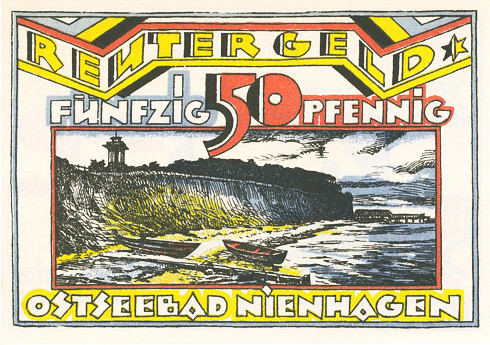 Wörgl’s mayor believed that speeding up circulation was the answer to Austria’s woes. The Notgeld (above) – an emergency currency issued by German towns at the start of the First World War – was based on the opposite principle. With the Reichsbank unable to print Marks fast enough for companies to pay their workers, people started printing their own money. Even though it was not legal tender, Notgeld was widely accepted and debt-free. It worked because this alternative financial system was pegged to material goods such as gold, corn and meat.
Wörgl’s mayor believed that speeding up circulation was the answer to Austria’s woes. The Notgeld (above) – an emergency currency issued by German towns at the start of the First World War – was based on the opposite principle. With the Reichsbank unable to print Marks fast enough for companies to pay their workers, people started printing their own money. Even though it was not legal tender, Notgeld was widely accepted and debt-free. It worked because this alternative financial system was pegged to material goods such as gold, corn and meat.
Notgeld notes were purposefully designed to be beautiful. This was a strategy to encourage people to collect and therefore save the notes so their debt would never be paid. They were printed on materials including leather, fabric, photographs, business cards, board, stamps, aluminium, wrapping paper, plywood, underground tickets, celluloid, wax, porcelain, silk and coal, all with a high level of craftsmanship. The banknotes pictured scenes from everyday life to fables (below) – using ordinary Germans’ beliefs, fears, hopes and dreams.
Not all alternative currencies are a response to dire circumstances. Sometimes they represent the dream of an alternative way of living. The nineteenth-century American anarchist Josiah Warren believed that profit and interest were unjust, and that cost should be the limit of price. Warren introduced a currency system to pay workers with notes indicating how many hours of labour they had performed. He created the Cincinnati Time Store where people could exchange the notes for goods. The ‘labour-for-labour store’ operated for three years until 1830.
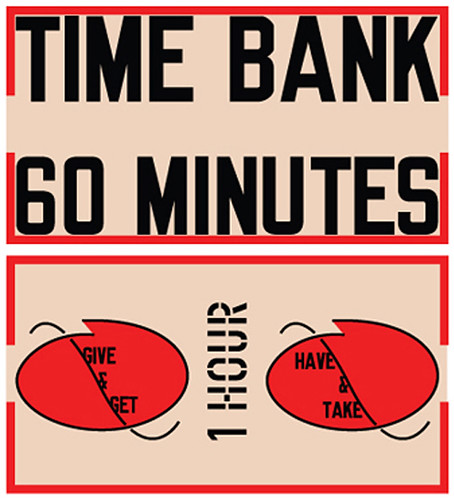 Inspired by Warren, international art journal e-flux launched Time / Bank in 2010. Not bound by geography, this online platform aims to create ‘a parallel micro economy for the cultural community’. Time / Bank has now branches in Belgium, Berlin, The Hague, Frankfurt, Moscow, New York City, Sherbrooke, Sydney and Warsaw. Every Time / Bank transaction is paid in Hour Notes designed by artist Lawrence Weiner (top and above).
Inspired by Warren, international art journal e-flux launched Time / Bank in 2010. Not bound by geography, this online platform aims to create ‘a parallel micro economy for the cultural community’. Time / Bank has now branches in Belgium, Berlin, The Hague, Frankfurt, Moscow, New York City, Sherbrooke, Sydney and Warsaw. Every Time / Bank transaction is paid in Hour Notes designed by artist Lawrence Weiner (top and above).
In 2010 artist Christian Nold launched the Bijlmer Euro: a parasitic ‘local’ currency carried on legal tender (below). It was a regular five or ten Euro note with a re-usable sticker containing an RFID tag recycled from disposable travel cards. By scanning this tag every time the note was used, the flow of money in a local area could be traced and made visible though data visualisation. Though Nold’s project was a short-lived experiment that ended in 2011, it pointed to one way in which art could re-imagine money.
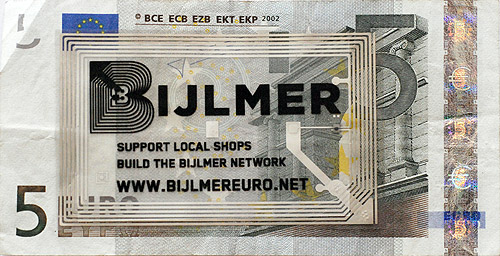 Such alternative currencies offer opportunities to exercise creativity and imagination. This is not just a matter of their physical manifestations – the forms given to coins, notes and (increasingly) websites. The design of alternative systems of exchange is a creative opportunity as well. Alternative currencies show that money is just an idea that can be redesigned.
Such alternative currencies offer opportunities to exercise creativity and imagination. This is not just a matter of their physical manifestations – the forms given to coins, notes and (increasingly) websites. The design of alternative systems of exchange is a creative opportunity as well. Alternative currencies show that money is just an idea that can be redesigned.
Eye is the world’s most beautiful and collectable graphic design journal, published quarterly for professional designers, students and anyone interested in critical, informed writing about graphic design and visual culture. It is available from all good design bookshops and online at the Eye shop, where you can buy subscriptions and single issues. Eye 83 (left) is out now, and you can browse a visual sampler at Eye before You Buy.

